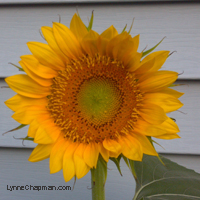|
it Once you have tinted your hair and achieved the glorious hair color of your choice, there will come a time when most of you will have to face a tedious chore…the retouch.
After four to eight weeks of living with the new vibrant color, you probably have gotten used to and maybe even begun to think of it as your own natural shade. Then there it is, down at your scalp, the telltale sign of darker hair or dull or gray hair threatening to make it known to the world that this new persona of yours is not the original. Now you have to entertain the idea of doing it all again. Since the first one half to one inch of your hair is un-tinted, you can't treat it the same as the tinted hair. If you apply the hair color to the entire length of hair, it can result in uneven color tone and dry, damaged hair. Instead, it is best to perform what we call the “retouch” This is not as easy as the original application but it is rewarding when it comes to the condition of your hair and the evenness of hair color. Following theses instructions will save you time and trouble. Prepare: Gather everything you will need.
Proceed:
For faded ends:
0 Comments
Are you overwhelmed? Watching too much of the News? The stress of life causes you become tense and even your scalp becomes tight. That tight scalp inhibits circulation and hinders healthy hair growth.
For years hairdressers have known the best way to relieve stress and to relax the scalp. That’s why every salon visit starts with a shampoo and thorough head massage. This massage increases circulation, stimulates nerve endings, frees knots of muscle tension, relaxes connective tissue and feels great. Professionals are trained in the pattern of manipulation for the most beneficial massage, however it is a simple process to perform on yourself with almost the same relaxing and healthful results. Using the following technique will get you started on taking better care of your scalp. You can create a massage lotion yourself by using a moisturizing conditioner and adding a few drops of essential oil. Try using lavender oil, chamomile or jasmine for anxiety and stress relief, or use grapefruit to uplift the spirits. Be aware that the essential oils are too strong to be used alone so be sure to mix them with the conditioner. Rinse your hair with warm water, and then wrap the hair in a warm towel to remove about 50% of the water. Remove the towel, loosen the hair, and apply a massage lotion. All of the manipulations will be performed with the pads of fingers and under the hair. Use slow, steady movements for enhanced relaxation or vigorous massage for more energy. Begin by placing both hands at each side of the back of the head, fingers pointed up. Slide the fingers firmly upward until they meet at the top at the head. Next, repeat the movement, except move the fingers in one-inch rotations as they slide towards the top. Repeat this several times. Now, place your hands in the front, palms on the forehead, fingers toward the top of the head and repeat the rotating motion while sliding the fingers toward the crown. Repeat this motion several times. Next, place the fingertips at the sides of the head just above the ears. Use the same circular motion as you move your fingers toward the top of the head. Repeat several times. Finally, place the fingertips at the temples and massage in slow circular movements. Finish by firmly running the fingers of both hands from the front hairline to the back. Repeat this several times. Remove the oils with a gentle shampoo. Follow with a conditioner to leave both scalp and hair in top condition. There is no need to wait for a trip to the hair salon for all the therapeutic benefits of a wonderful scalp massage. All you have to do is spend a little time pampering yourself. It seems so simple – just cut a straight line on straight hair. Right?
No. Cutting your little girl’s hair or your own hair can be quite a challenge. Looking closely, you may notice that a person’s head is not made up of straight lines. All of the areas are curved. Cutting straight lines in hair may result in an un-natural un-even appear appearance. Trimming bangs: You may call this section the fringe. Comb all of the long hair – the hair that you do not want to cut – back and clip it out of the way. We do this to avoid cutting hair that is not meant to be part of the bangs. Cutting a few long hairs, by accident, each time you trim bangs, can eventually result in more bangs than you want.
The result is natural looking bangs with a soft, not blunt, edge. The end trim.
|
AuthorLynne Chapman served as Hair Site Editor of BellaOnline.com for fifteen years. She is a professional stylist and colorist of more than forty years. Categories
All
|
